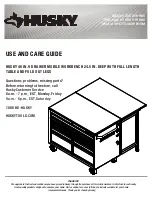
| DD_WRONG_LENGTH_BLOCK | 416 |
| ERROR_IO_INCOMPLETE | 996 |
| ERROR_IO_PENDING | 997 |
| ERROR_NOACCESS | 998 |
| ERROR_CANTOPEN | 1011 |
| ERROR_CANTREAD | 1012 |
| ERROR_CANTWRITE | 1013 |
| ERROR_END_OF_MEDIA | 1100 |
--------------------------------------------------
--------------------------------------------------
| Symbolic Error | NT Error Number |
|--------------------------------|-----------------|
| ERROR_FILEMARK_DETECTED | 1101 |
| ERROR_BEGINNING_OF_MEDIA | 1102 |
| ERROR_SETMARK_DETECTED | 1103 |
| ERROR_NO_DATA_DETECTED | 1104 |
| ERROR_PARTITION_FAILURE | 1105 |
| ERROR_INVALID_BLOCK_LENGTH | 1106 |
| ERROR_DEVICE_NOT_PARTITIONED | 1107 |
| ERROR_UNABLE_TO_LOCK_MEDIA | 1108 |
| ERROR_UNABLE_TO_UNLOAD_MEDIA | 1109 |
| ERROR_MEDIA_CHANGED | 1110 |
| ERROR_BUS_RESET | 1111 |
| ERROR_NO_MEDIA_IN_DRIVE | 1112 |
| ERROR_IO_DEVICE | 1117 |
| ERROR_TOO_MANY_LINKS | 1142 |
--------------------------------------------------
SCSI sense data
A tape drive failure can be reported to an attached open system host, by using the SCSI protocol. When
the host detected the failure, it built the following SCSI sense data record. The error condition example
that is provided in Figure 31 on page 73 is for a COMMAND TIMEOUT. The likely cause is a drive that is
failing to respond or a failing component of the Fibre Channel.
SENSE DATA
aabb xxxx ccdd eeee eeee eeee eeee eeee ffgg hhxx ssss ssss ssss ssss ssss ....
0600 0000 1200 0000 0000 0000 0000 0000 0200 0300 0000 0000 0000 0000 0000 0000
0000 0000 0000 0000 0000 0000 0000 0000 0000 0000 0000 0000 0000 0000 0000 0000
0000 0000 0000 0000 0000 0000 0000 0000 0000 0000 0000 0000 0000 0000 0000 0000
0000 0000 0000 0000 0000 0000 0000 0000 0000 0000 0000 0000 0000 0000 0000 0000
0000 0000 0000 0000 0000 0000 0000 0000 0000 0000 0000 0000 0000 0000
Figure 31: SCSI sense data
Note: The area that is highlighted in Figure 31 on page 73 represents the SCSI sense data that is
presented by the host. The regular font data (for this example, many bytes of 'zero'), designated by 'ssss'
would normally contain device sense data. With the kind of failure that is depicted in this example
(COMMAND TIMEOUT), the host cannot collect valid device sense data; zeros are the result and must be
ignored. If the host is able to collect valid sense data from the drive, the first byte 'ss' is '70,' '71,' 'F0,' or
'F1,' and valid device sense data is included.
The beginning sense information for this example matches this format -
aabb xxxx ccdd eeee eeee eeee eeee eeee ffgg hhxx ssss ssss ssss….
aa
Length of the Command Descriptor Block (CDB) sent by the host (for this example, '06' bytes).
bb
SCSI target address (for this example, SCSI address '00').
xx
Unused or reserved.
cc
Start of CDB; cc is the operation code (byte 0) (for this example, '12,' which was an "Inquiry").
Messages 73
















































